‘To have a roof is a right’ — Latino renters urge Costa Mesa Council to control rent hikes
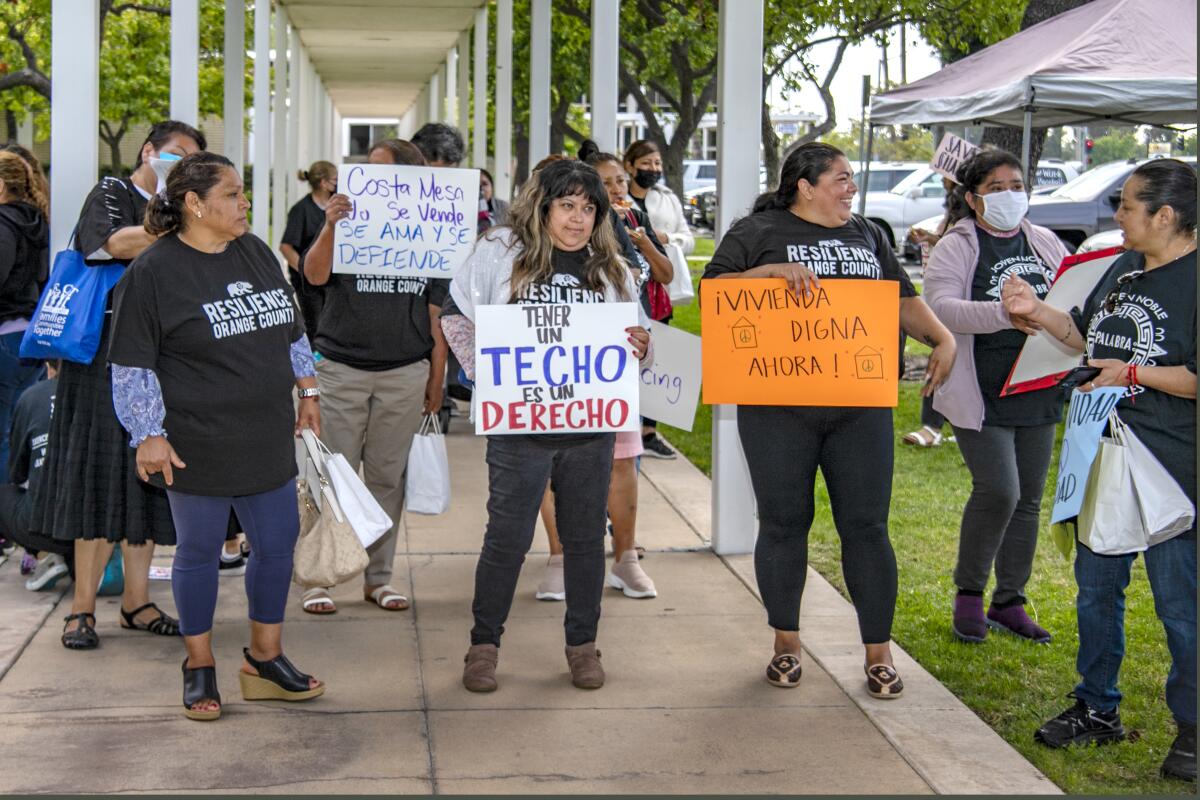
- Share via
Patricia Colin has lived in a Costa Mesa two-bedroom apartment with her husband and three children for the past 10 years. In that time, her monthly rent has increased by $825 per month.
However, in six years working part time for Newport-Mesa Unified School District, where her kids attend middle and high school, her hourly wage has increased by just $2.26. With husband Miguel working irregular hours as a painter, it can be hard to make ends meet.
“The rent is really high, and it’s been getting higher and higher,” said the 46-year-old, whose monthly rental cost climbed over the past decade from $1,300 to $2,125. “The building is old and needs to be repaired. But we’re not able to afford a new property.”

Angela Espinosa has lived in her apartment for 30 years and recently got a notice informing her of a $200 monthly rent increase. When she tried to get a roommate to help defray costs, the manager told her it was illegal and has been pushing for her to leave, she said in Spanish through a translator.
“I don’t feel happy there anymore,” said Espinosa, 70. “I just want my privacy.”
For Merced Olivera, a renter on the city’s westside for the past 12 years, what used to be a stable monthly cost has recently begun to spike. In the past 18 months, she’s gotten three separate notices that her rent was being increased by $150.
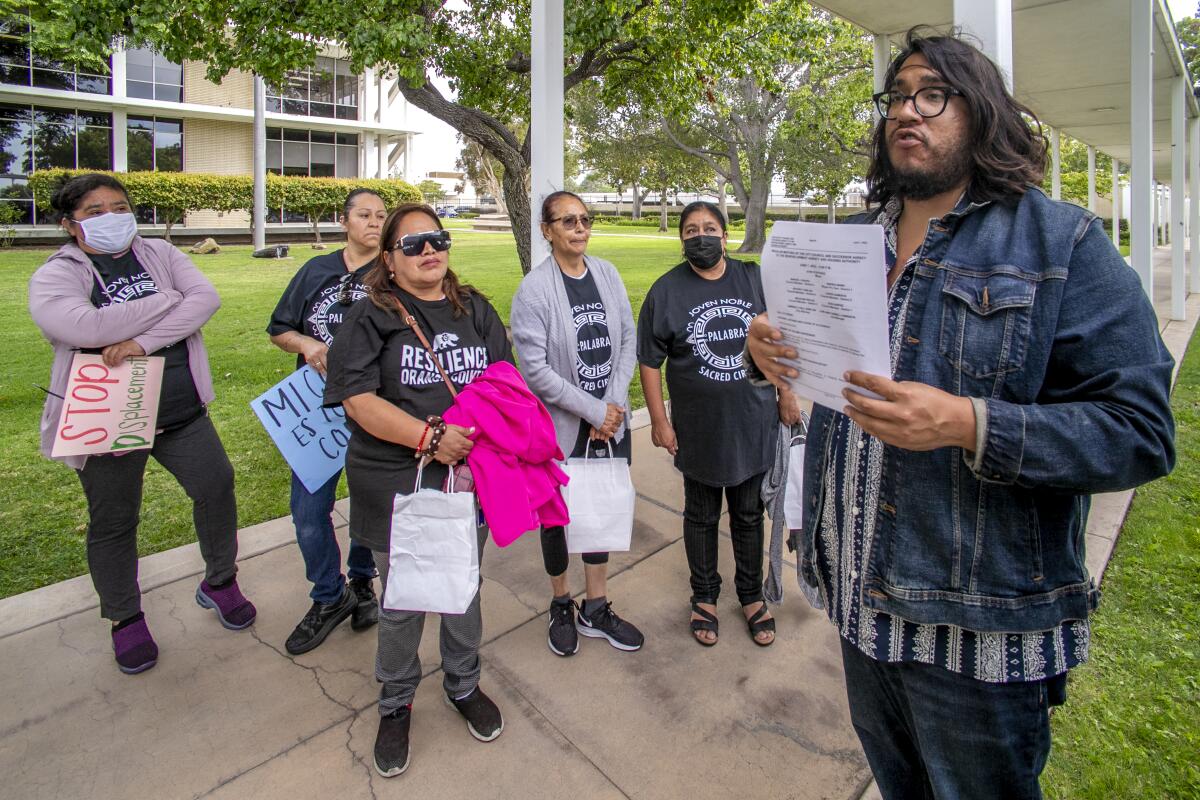
Renters make up 60% of Costa Mesa’s residency, but as costs increase on aging properties, some low-income Latino residents fear they may have to consider living elsewhere.
A group of 25 mostly Spanish-speaking residents convened outside Costa Mesa City Hall Tuesday to voice their concerns during that night’s council discussion on the 2022-23 budget and to request city leaders enact rent control measures.
Holding posters that spoke of displacement, they chanted “Tener un techo es un derecho,” indicating “a roof,” or housing, is a human right.
Resilience Orange County, a nonprofit social justice group that aims to build leadership and representation in local communities of color, helped residents submit public comments. The organization conducted two recent campaigns among Costa Mesa’s Latino voters, including a phone survey that identified housing insecurity as the most urgent issue among 1,215 respondents.
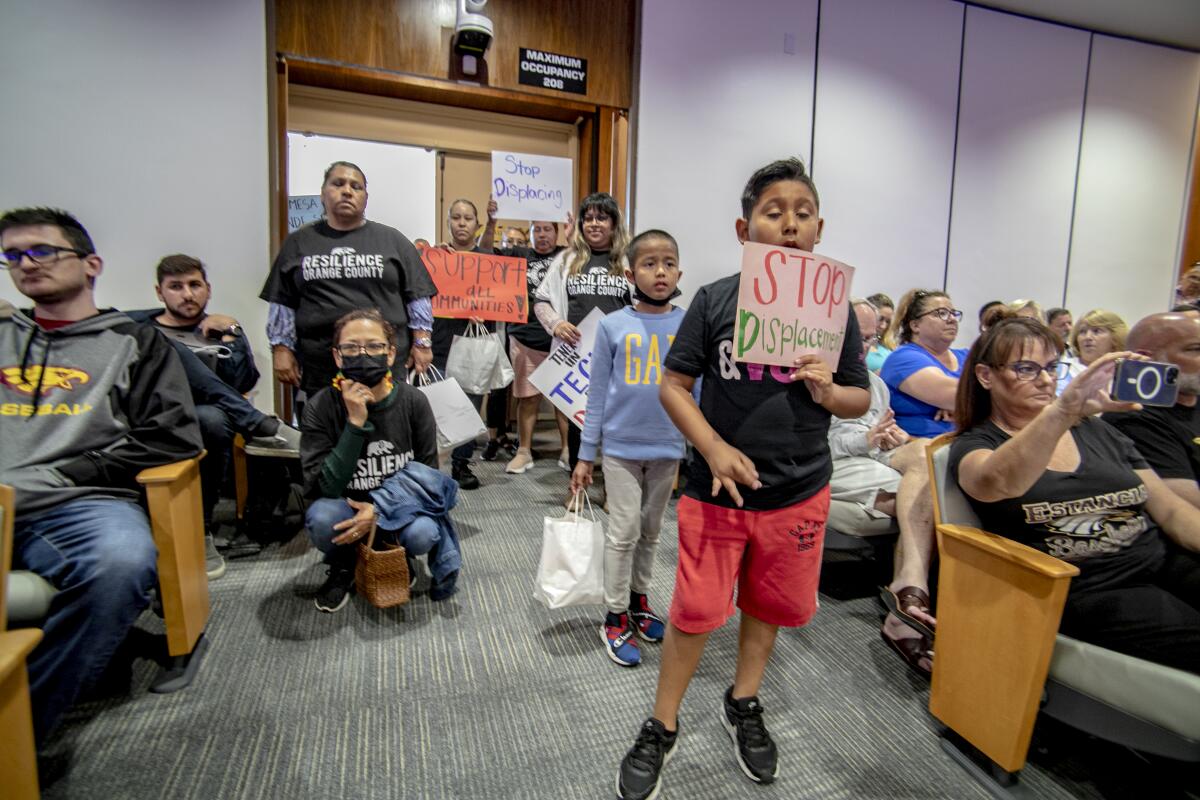
Members of the organization found while doing in-person canvassing 62% of those they spoke with “expressed deep financial stress about rising rent,” and “shared a sense of displacement, a sense of being on the way out, on the verge of eviction or feeling pushed out of the city.”
Inside council chambers Tuesday, residents asked city leaders for help. Juana Trejo, a renter for the past 20 years, said low-income citizens in all districts are being financially devastated by rent hikes.
“We need you guys to do justice for the people you represent, because you also represent us,” she said. “We also pay taxes, and we also deserve to live with dignity and without fear.”
Colin questioned whether Costa Mesa might cap rent increases, like the city of Santa Ana.
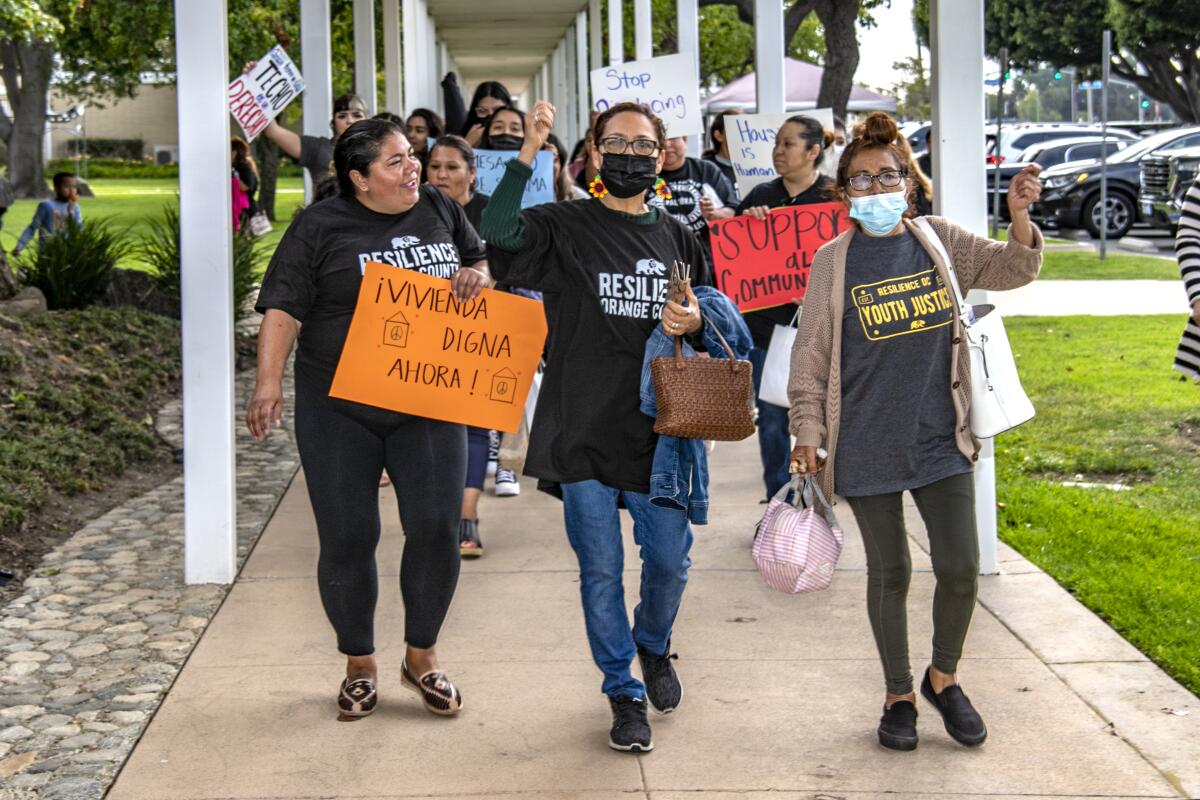
“Please take this into consideration and try to make that happen as Santa Ana did,” she said. “I don’t want to leave Costa Mesa. We’re here together, and we can do this together.”
Santa Ana’s 2021 rent stabilization ordinance limits increases to 3%, or 80% of the change in the Consumer Price Index in the most recent 12 months, whichever is lower. The maximum allowable increase is posted each June 30 and takes effect Sept. 1.
If the CPI falls, then no rental increases are allowed. Owners seeking relief from the cap may petition for exemption if they can prove an increase is necessary to provide a fair and reasonable return on their property.
Although the city of Costa Mesa has not considered imposing a cap, officials reminded residents Tuesday rental assistance programs started during the pandemic still have funds for qualifying low-income individuals and families.
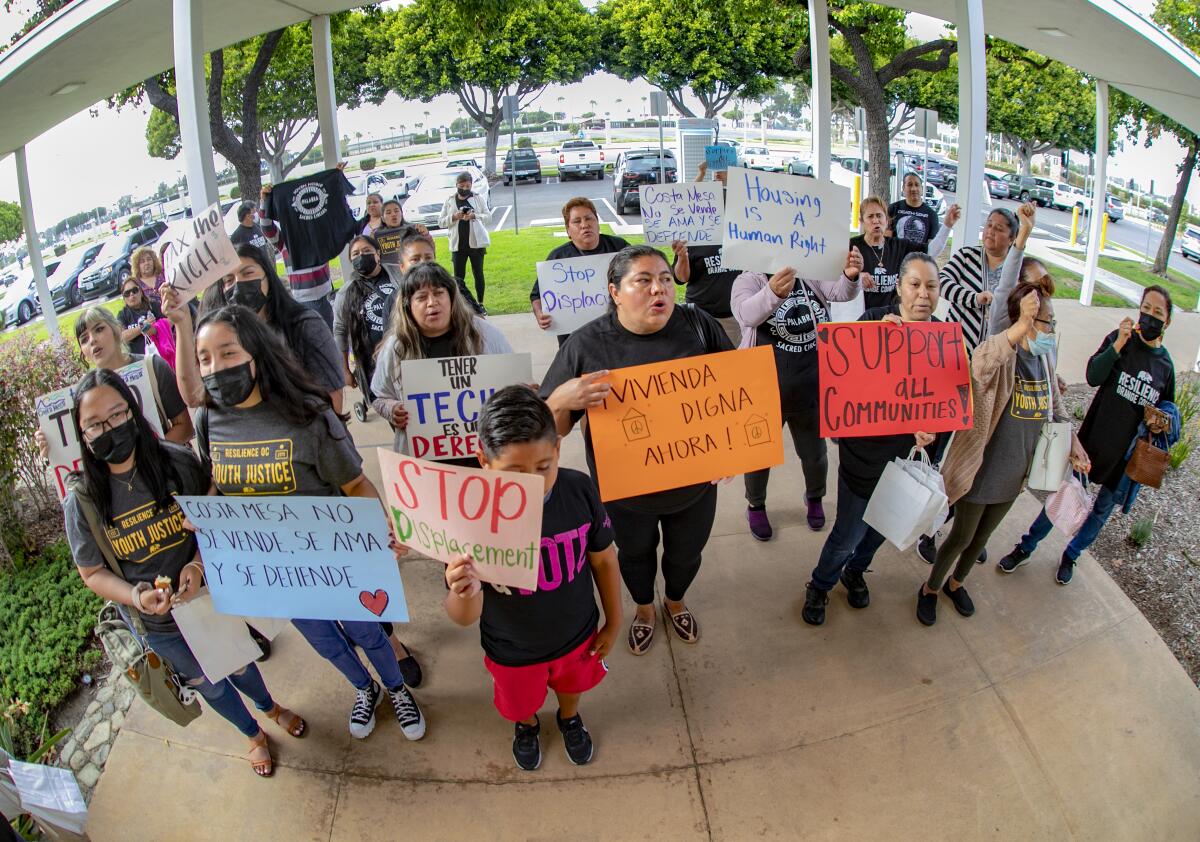
City spokesman Tony Dodero confirmed Wednesday $1.14 million in rental assistance was made available through COVID-19 block grants and the funding from U.S. Department of Housing and Urban Development.
So far, 216 individuals have applied for funds, and approximately $560,000 is still available to low-income residents who earn 80% or less of the area median income, defined as $75,900 for one individual, $86,750 for a household of two, $97,600 for a family of three and $108,400 for four, according to figures provided by the city.
Council members agreed to provide an update on the status of the assistance programs at their next regular meeting June 21.
“I’m really grateful to those folks who came in here,” said Mayor John Stephens. “These chambers are a home to people, and they can come and participate in what we’re doing.”
All the latest on Orange County from Orange County.
Get our free TimesOC newsletter.
You may occasionally receive promotional content from the Daily Pilot.




